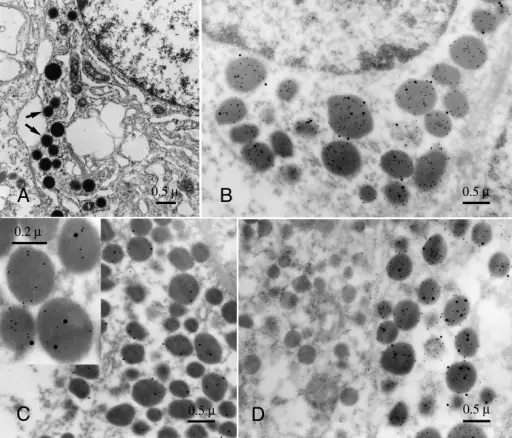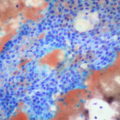Anterior Pituitary Gland Pathology Video Pituitary Adenoma Pituitary adenoma is a benign tumor of anterior pituitary cells. Pituitary adenomas may be functional meaning it is hormone-producing. Pituitary adenomas may be nonfunctional meaning it is silent. Nonfunctional tumors often present with…
Anterior Pituitary Gland Pathology Study Guide

A, In mammosomatotroph adenomas, mammosomatotroph differentiation was confirmed in tumor cells that demonstrated well-developed rough endoplasmic reticulum and characteristic granule extrusions (arrows). B and C, Double-immunolabeling of thin sections revealed positive signal for GH (large signal) in neuroendocrine granules of cells with somatotroph differentiation and positive granular signal for PRL (small signal) in cells with lactotroph differentiation. B, Mammosomatotroph cells, in contrast, revealed granules with immunoreactivity for both GH and PRL. C, Similarly, double-labeled mammosomatotroph cells were also detected in areas of acidophilic hyperplasia. The inset shows at a higher magnification that positive signals for both GH and PRL are detected in neuroendocrine granules within the same cell. D, Rare scattered mammosomatotroph cells were detectable in the regular anterior pituitary gland. A mammosomatotroph cell (right) is adjacent to a cell with exclusive immunoreactivity with anti-PRL (left). Somatic GNAS mutation causes widespread and diffuse pituitary disease in acromegalic patients with McCune-Albright syndrome: Vortmeyer AO, Gläsker S, Mehta GU, Abu-Asab MS, Smith JH, Zhuang Z, Collins MT, Oldfield EH - The Journal of clinical endocrinology and metabolism (2012). Not altered. CC.


